Photographs by the author in 2006, except for the one of the chancel roof, and close-ups of the figures on the pulpit, which were taken in 2019 by Robert Freidus. You may use these images without prior permission for any scholarly or educational purpose as long as you (1) credit the photographer and (2) link your document to this URL in a web document or cite the Victorian Web in a print one.]
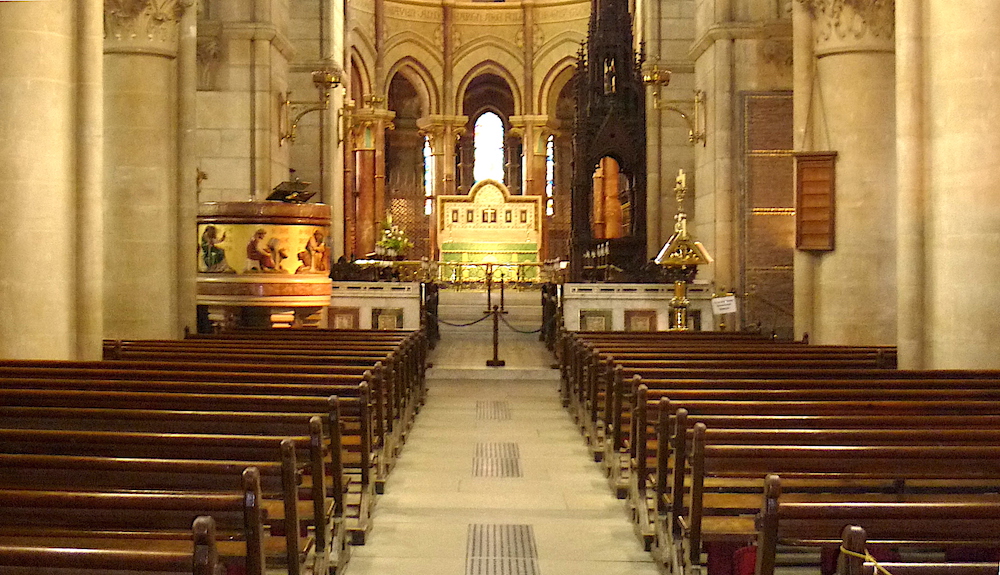
Interior, St. Fin Barre's Cathedral (various spellings). William Burges. Designed 1862-63; consecrated 1870; work continued on the interior (e.g. see the David door, which was only completed in 1889). Cork, Republic of Ireland.
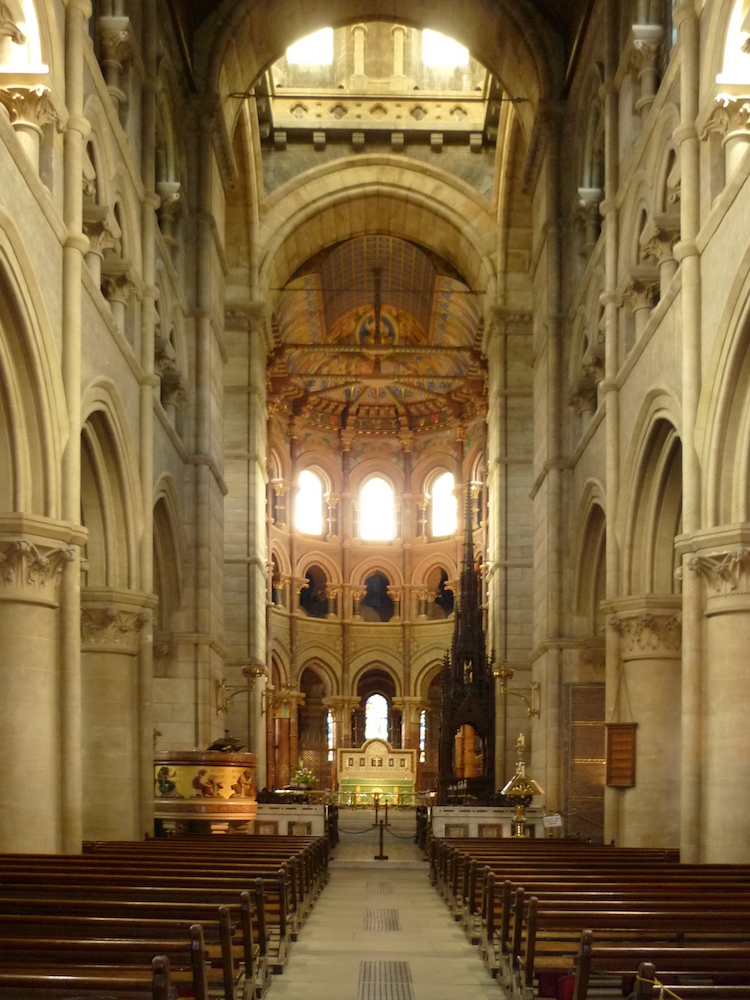
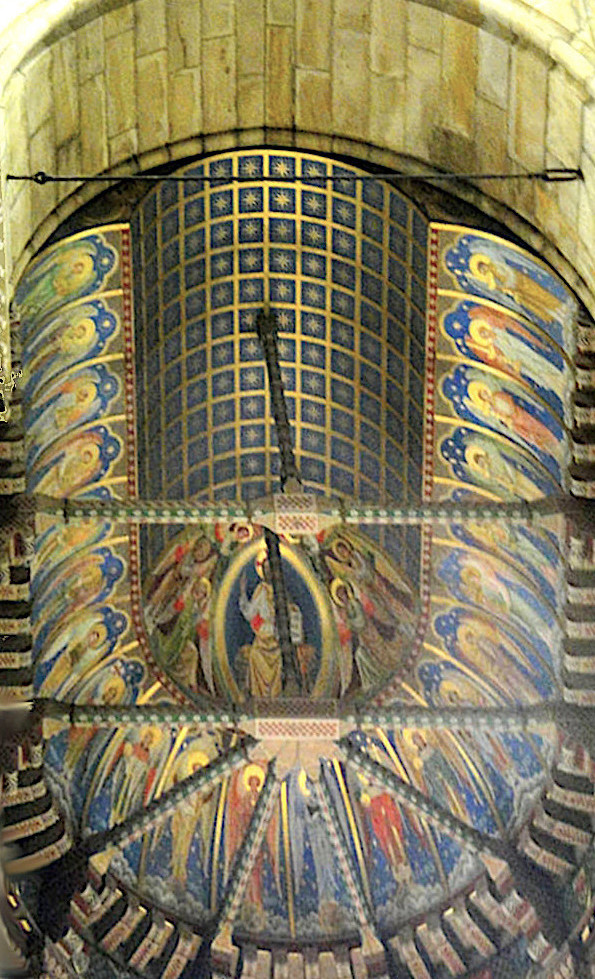

Left to right: (a) The Cathedral interior, looking east. (b) The Chancel roof. (c) The sanctuary, with the ambulatory behind it.
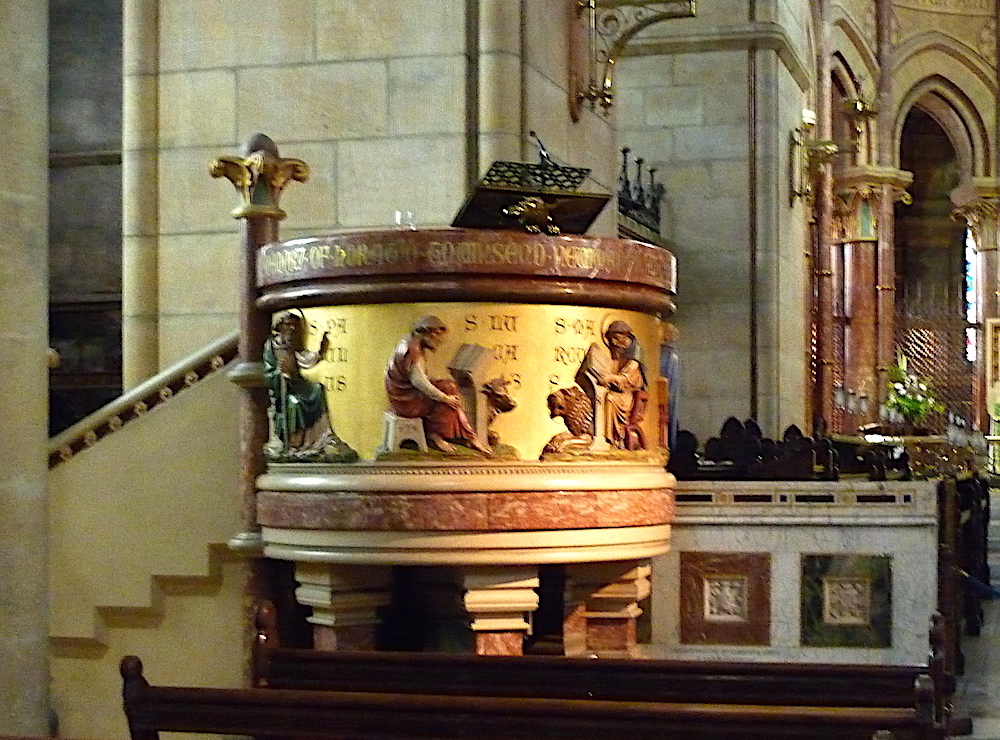
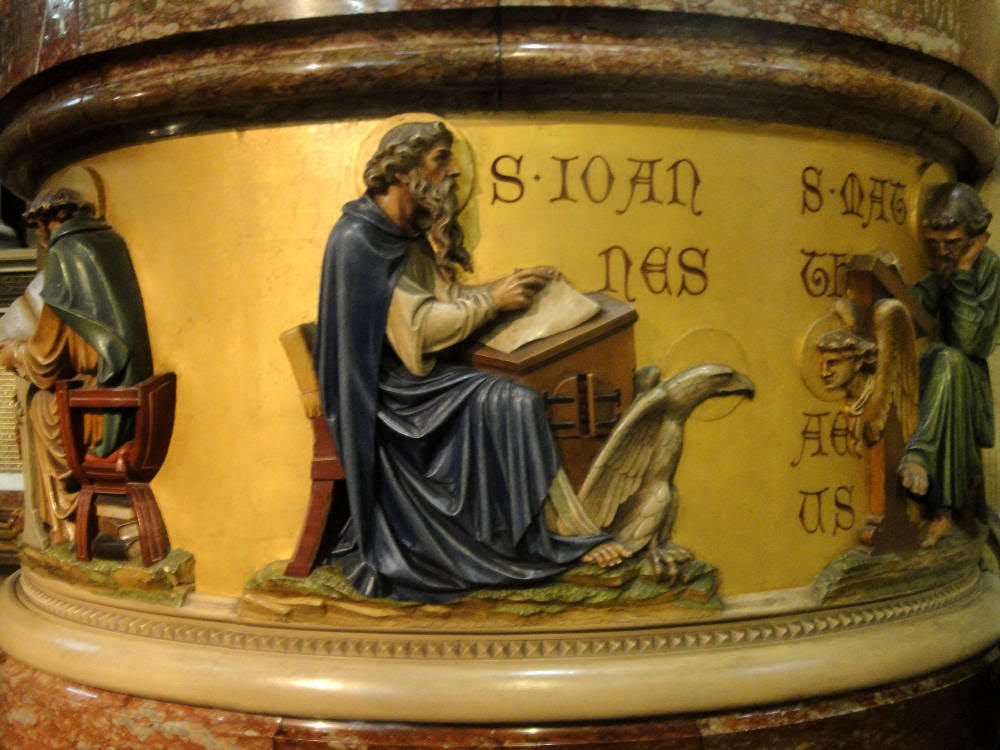
Left: The pulpit, decorated with figures of the Evangelists. Right: St John, with the eagle which represents him.
The fine detail everywhere is rich in symbolic significance as well as in craftsmanship, but the pulpit somehow became the most controversial item. It was designed in 1873, and, although completed in 1874, painted "much later": Joseph Mordaunt Crook describes it as "ruthless," and "hard to interpret and harder still to like"; in its scale, he sees it as "a link between the 1860s and the 1960s, between the grotesque 'realism' of the Pre-Raphaelite and the cruel 'functionalism' of the New Brutalist." It is reminiscent of his massive chimneypieces, and not much of a surprise to anyone familiar with his work. No one is more familiar with that than Crook, and he writes at the end of his discussion of it (surely quite rightly), "Ugly or not, that pulpit matches the sublimity of its setting" (177).
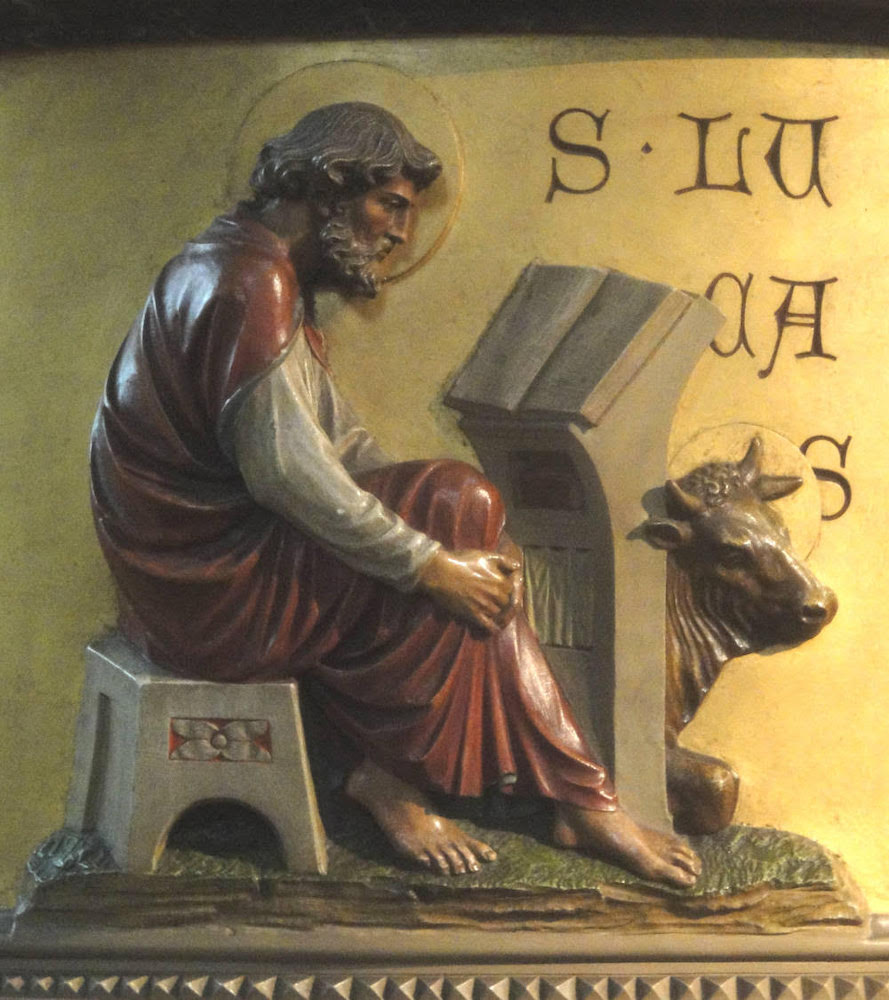
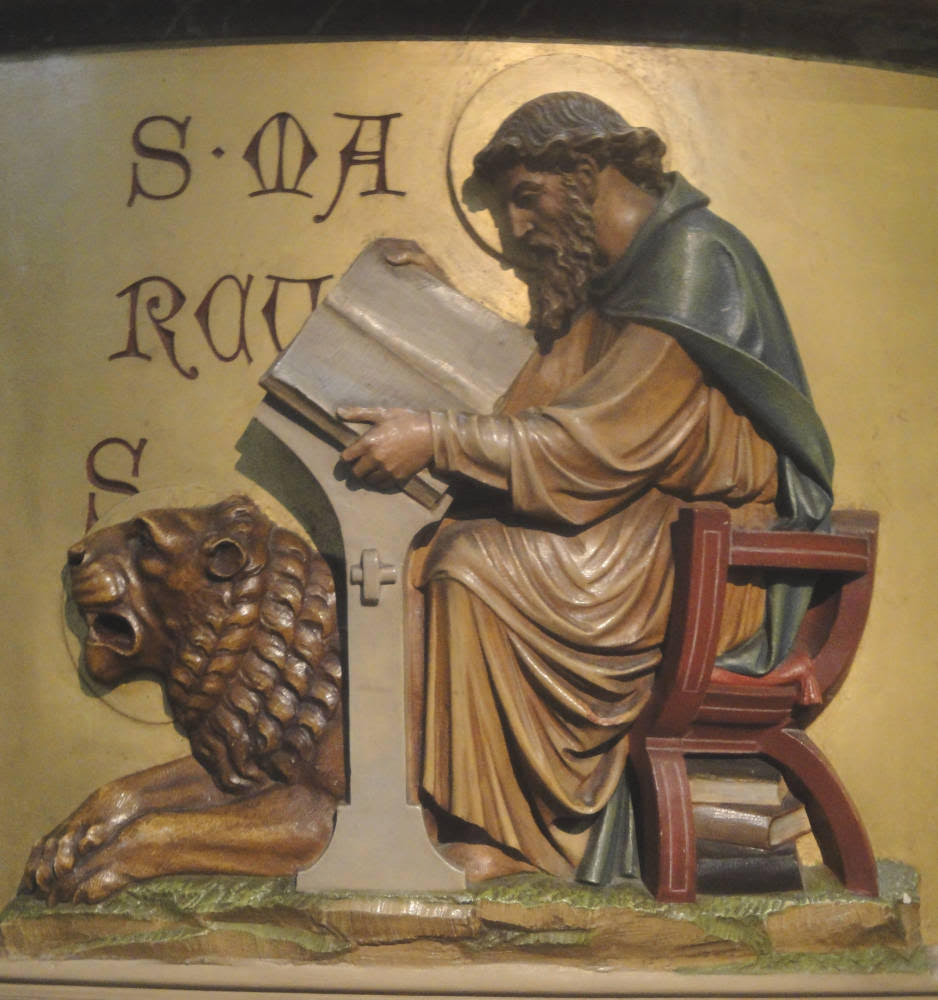
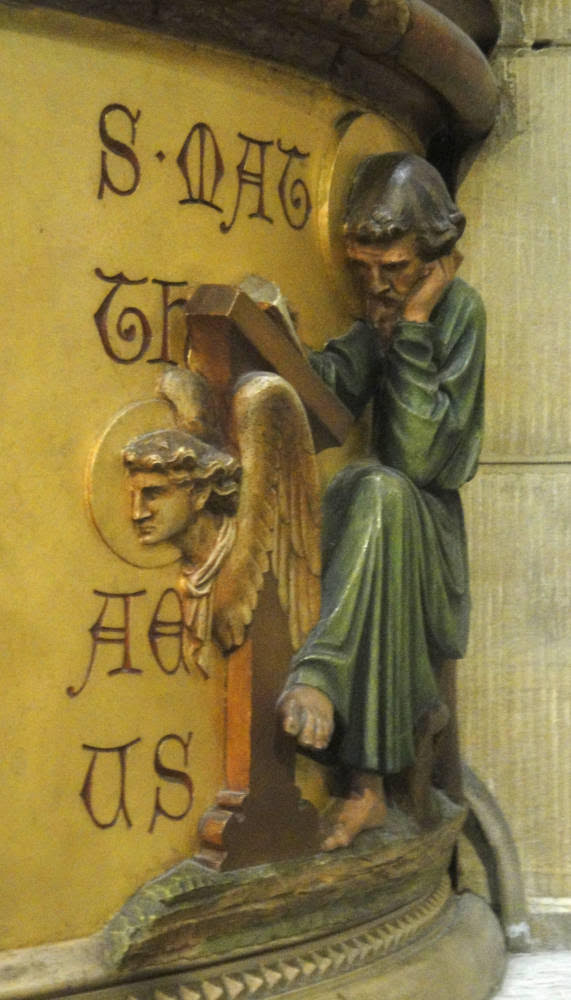
Other Evangelists around the pulpit, each with his symbolic representation. Left to right: (a) St Luke, with the ox. (b) St Mark with the lion. (c) St Matthew, with the top part of a winged man leaning out from his reading stand.
St Paul is also shown, depicted "sitting on an upturned 'pagan' altar," while the brass reading-stand on the pulpit is supported by "a winged dragon which symbolises evil taking flight at the sound of the Word being preached" ("St Fin Barre's Cathedral, Cork"). To complete the ornamentation, the brass reading-stand on the pulpit is supported by "a winged dragon which symbolises evil taking flight at the sound of the Word being preached" ("St Fin Barre's Cathedral, Cork").


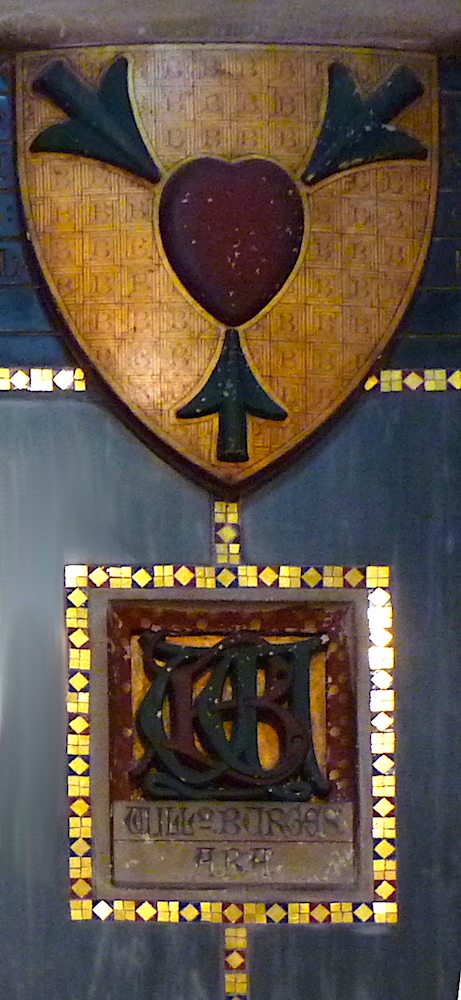
Stained glass window in memory of Burges, with memorial and pendant below.
Amid the "single iconographic scheme" of the stained glass windows (Williams 6), which progresses from the Old Testament at the west end to the New Testament in the ambulatory, is one erected by Alfred Burges to the memory of his eldest son, "Architect of this Cathedral: Died April 20 1881." Designed by Burges himself, it shows the King of Heaven presiding over the four apostles, who hold open the Word of God. As elsewhere in the cathedral, Matthew is shown in human form, while Mark is shown as a lion, Luke as an ox and John as an eagle. Below them flame the seven candles of Revelations 1:20, representing the seven churches of Asia Minor. Under the window and within the inscription is a simple shield and, below that, a small, worn-looking plaque with a mosaic surround, bearing Burges's entwined initials and name.
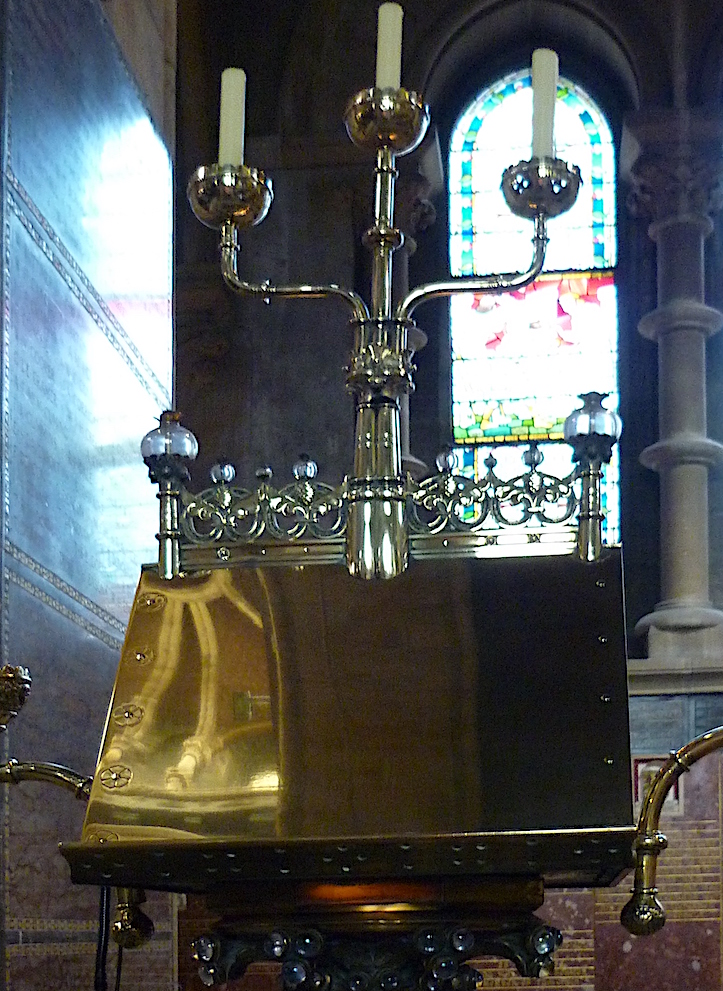
Candles and glass drops decorate the solid brass lectern of 1877, made by Jones and Willis "[e]choing Burges's Lille competition design of 1856" (Crook 171).
However, everything here, including the church fittings, furnishings, mosaics, ironwork and stained glass, shows Burges's distinctive hand, making the whole cathedral a memorial to him and to his own distinctive style of "Burgesian Gothic."
Other Views and Related Material
- Exterior of the Cathedral
- Sculpture on the West Front
- Metalwork
- Mosaics
- The Stations of the Cross (paintings)
- Stained Glass
- "The Eclecticism of William Burges"
Bibliography
Crook, J. Mordaunt. William Burges and the High Victorian Dream. Revised and Enlarged Edition. London: Francis Lincoln, 2013. [Review]
"St Fin Barre's Cathedral, Cork" (welcome leaflet available in the cathedral).
"The Present Cathedral." (Cathedral website). Viewed 23 August 2009.
Turnor, Reginald. Nineteenth Century Architecture in Britain. London: Batsford, 1950.
Williams, Matthew. William Burges, 1827-81. Andover, Hants: Jarrold Publishing (Pitkin Guide), 2007.
Last modified 24 November 2023